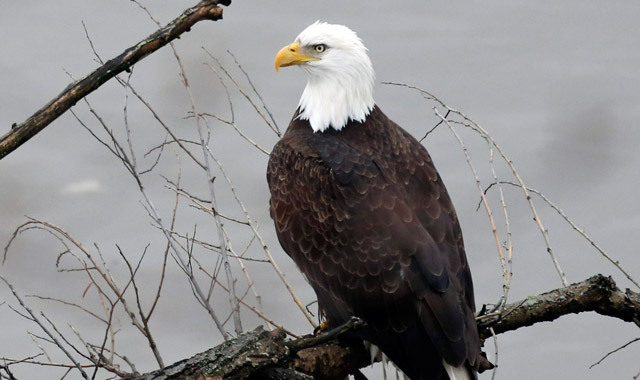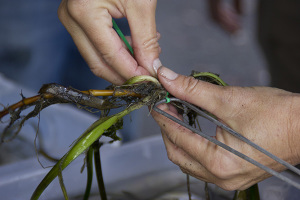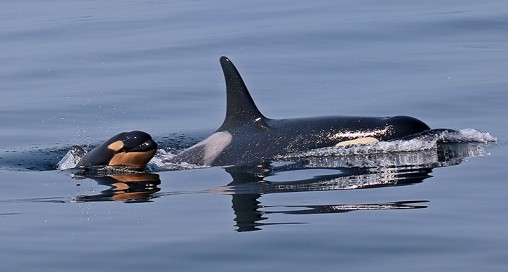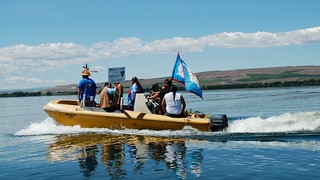Pollution from stormwater has been called one of the greatest threats to Puget Sound. How much will it cost to hold back the rain? A new EPA-funded study says the price could reach billions per year, a figure that dwarfs current state and federal allocations.

Source: Encyclopedia of Puget Sound
Key takeaways
- Runoff—or stormwater—from roads, parking lots, and roofs is one of the largest sources of contaminants flowing into Puget Sound.
- An EPA-funded report projects costs of up to $14 billion dollars per year over 30 years to fully address stormwater pollution in the region.
- A longer time frame for fixing the problem may be more practical. Costs fall to $650 million dollars per year if work is done over a 100-year period.
- Stormwater pollution is made worse by urban development that prevents rain and snow from being absorbed by plants and soil.
- Among the innovations grabbing the attention of scientists and engineers is low impact development, which use a place’s natural hydrology to control stormwater runoff.
The figure is staggering: Close to half a trillion dollars over the next 30 years. That’s what it could cost to completely address Puget Sound’s growing stormwater problem, according to an EPA-funded study presented last spring at the Salish Sea Ecosystem Conference.
The study, prepared by researchers at the King County Department of Natural Resources and Parks, projects the capital and maintenance costs of the stormwater treatment facilities that would be needed to fully comply with the Clean Water Act. A 30-year time frame could mean capital outlays of as much as $14 billion dollars per year. Jim Simmonds, the report’s lead author, acknowledges that, given the huge expense, a 30-year fix appears unlikely. But the report also looks at potential stormwater retrofits over the next 100 years. Costs over that time frame would average about $650 million dollars yearly. “That is far more realistic,” he says, and would help undo a century-old problem.
“It took us 100 years to create the problem, and it’s going to take a long time to fix it.”
—Jim Simmonds, Environmental Programs Managing Supervisor, King County Natural Resources and Parks
The figures far exceed last year’s state allocation of $100 million dollars, but Simmonds says the study is not meant to suggest that the legislature suddenly come up with an additional $14 billion dollars annually to deal with stormwater. Instead, he says, it tells a story of where we are and where we still have to go. Runoff—or stormwater—from roads, parking lots, and roofs is one of the largest sources of contaminants flowing into Puget Sound. “One of the questions that has come up repeatedly is ‘how much will it take to fix this problem?'” he says. “This report puts that in context.”
How we got here
Sandwiched between the Olympic and Cascade mountain ranges, Puget Sound’s urban areas receive up to 40 inches of rain each year. Historically, most of this water soaked into the ground or was taken up by plants. In forested areas in the Pacific Northwest, evergreen trees transport about 40% of rainfall back to the atmosphere through their needles. The remaining water filters through other plants and the soil. The ecosystem is driven by this water cycle, but over the past 100 years, human development has drastically altered this natural pattern.

Urban areas were originally designed to move stormwater quickly and efficiently downstream through a series of drains, pipes, and sewers. Flood prevention was the main reason for getting stormwater out of the city fast, but over the years municipalities have come to realize that speedy water removal is actually detrimental to the health of Puget Sound.
Without the filtering effect of plants and soil, surface runoff increases and stream flows become “flashier”—surges in runoff are more frequent and more intense. This means greater flooding, and more polluted water flowing into Puget Sound.
In Seattle, one acre of pavement can generate as much as a million gallons of stormwater each year. Water from downpours picks up all kinds of pollutants—from motor oil to dog waste—as it makes its way down the drains. Carcinogens, heavy metals, and harmful bacteria can all be counted in this mix. One study estimates that rainfall runoff events can transport up to 8 times the amount of copper and 6 times the amount of mercury compared to baseline conditions. That’s bad news for wildlife and humans alike.

The Clean Water Act
The Clean Water Act of 1972 was one of the first rigorous national laws dealing with water contamination, with the first concentration-based limits for pollution. The original goal was to eliminate the direct discharge of pollutants by 1985. Amendments to deal with stormwater weren’t introduced until 1987, which required permits for all new development projects. In the 1980s and 1990s a slew of new legislation introduced more criteria for stormwater management. Currently all development and redevelopment projects require approved stormwater treatment, and that requires facilities and infrastructure.
So what about those billion dollar figures? Simmonds says the potentially high costs outlined in the King County report highlight the need for creative solutions. The report outlines a worst-case scenario that assumes all retrofit approaches will stay the same. New technologies and other innovations will almost certainly lower costs, he says, but the report does not focus on the how—just the how much. And whether the costs are in the hundreds of millions or the billions, Simmonds argues that we risk more if we ignore the problem. “Yes, this is a huge investment. But I don’t think it has to be dismissed as too expensive,’” he says. “The [state and federal agencies] have all declared that stormwater is the biggest threat to Puget Sound. We have to decide how we’re going to deal with that.” The bottom line, he says: “It took us 100 years to create the problem, and it’s going to take a long time to fix it.”
The big impact of low impact development
Among the innovations grabbing the attention of scientists and engineers are low impact development approaches to stormwater treatment, which use a place’s natural hydrology to control stormwater runoff.
At the 2014 Salish Sea Ecosystem Conference, Mindy Fohn, a stormwater manager with Kitsap County, described one low impact development approach where managers are planting trees in notoriously impervious surfaces like parking lots to trap stormwater. In the past, these trees might have been planted on raised islands. Now planners are putting them in lower areas that draw the water between parking spots. These interventions are small, local, and often quite beautiful.

So far, bioretention from low impact development has shown promising results. A natural filtration system of soils and plants was recently demonstrated by NOAA to effectively eliminate some of the deadly effects of stormwater on coho salmon.
Another area of interest involves citizens themselves, in a more grass roots approach, installing rain gardens on their own properties. Rain gardens are simply landscaped areas that collect, absorb and filter stormwater runoff from rooftops, decks and other hard surfaces. The idea is to prevent stormwater from washing off individual properties which, if done in sufficient numbers, will have a large positive effect on watershed and basins. The Washington State University and Stewardship Partners are working together towards the goal of ‘12,000 Rain Gardens‘ by the year 2016.



















